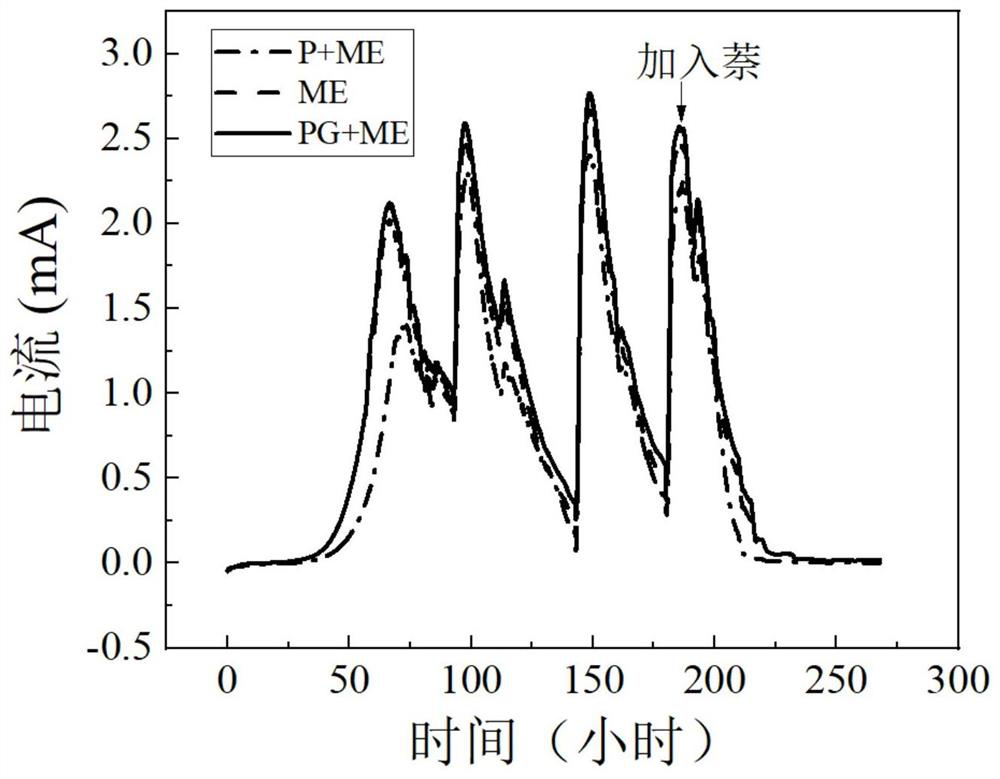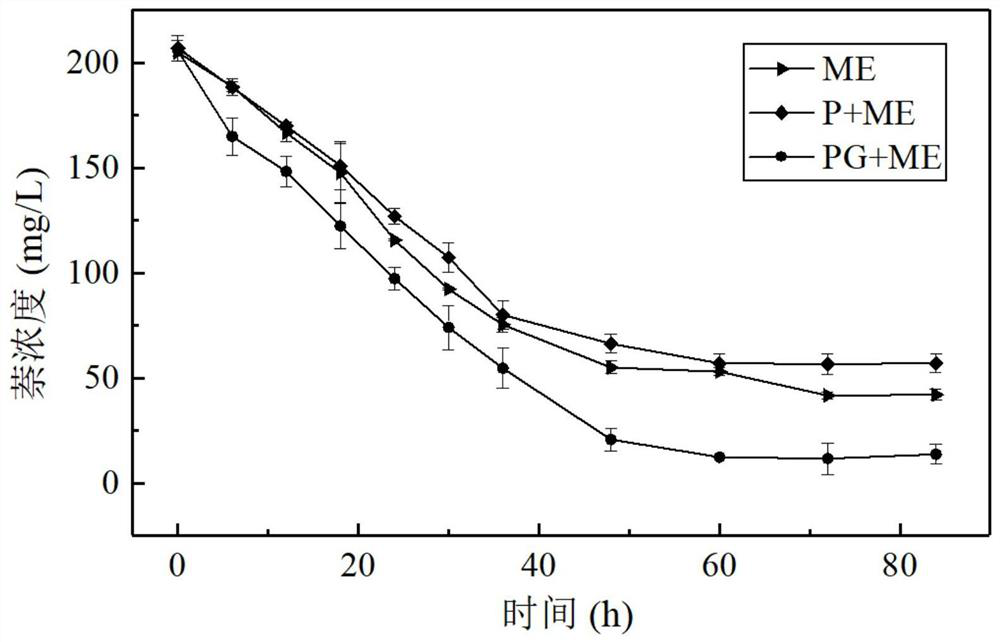Application of induced polyaniline loaded graphene modified electrode reactor and polycyclic aromatic hydrocarbon removal method
A technology of polycyclic aromatic hydrocarbons and modified electrodes, which is applied in chemical instruments and methods, electrochemical biological combination treatment, water pollutants, etc., can solve the problems of poor enrichment effect of electroactive microorganisms and low electron transfer efficiency, and shorten the start-up time, promote film formation, and enhance the effect of electron transfer
- Summary
- Abstract
- Description
- Claims
- Application Information
AI Technical Summary
Problems solved by technology
Method used
Image
Examples
Embodiment 1
[0021] Set up the experimental group PG+ME to degrade polycyclic aromatic hydrocarbons naphthalene in water using a microbial electrochemical system using polyaniline and graphene modified electrodes
[0022] 1) Modification of graphite rod electrodes
[0023] The electrochemical reactor is a three-electrode system with a diameter of 5 cm and a height of 5 cm including a graphite rod working electrode, a platinum counter electrode and an Ag / AgCl reference electrode. Add 100 mL of distilled water, 0.8% concentrated sulfuric acid, and 4.0 mL of aniline solution to the reactor , 1500rpm / min high-speed stirring for 10min to make the aniline evenly dispersed in the solution. Disperse the aniline evenly in the solution. Use an electrochemical workstation to apply a 0.8V potential for 100s, then add 0.03g graphene for cyclic voltammetry scanning, the scanning speed is 0.05V / s, and the scanning potential range is -0.3–1.2V, and finally the modified electrode is heated at 25°C. down ...
PUM
| Property | Measurement | Unit |
|---|---|---|
| Thickness | aaaaa | aaaaa |
Abstract
Description
Claims
Application Information
 Login to View More
Login to View More - R&D
- Intellectual Property
- Life Sciences
- Materials
- Tech Scout
- Unparalleled Data Quality
- Higher Quality Content
- 60% Fewer Hallucinations
Browse by: Latest US Patents, China's latest patents, Technical Efficacy Thesaurus, Application Domain, Technology Topic, Popular Technical Reports.
© 2025 PatSnap. All rights reserved.Legal|Privacy policy|Modern Slavery Act Transparency Statement|Sitemap|About US| Contact US: help@patsnap.com



